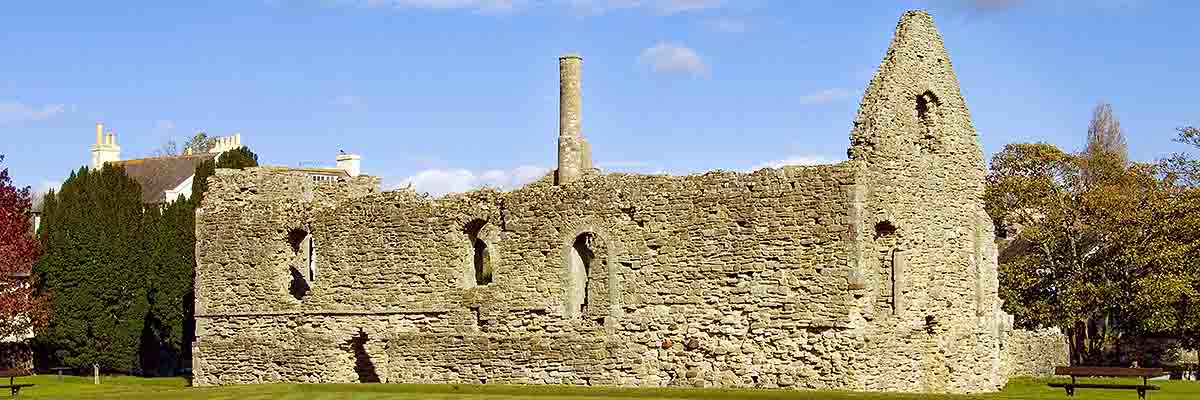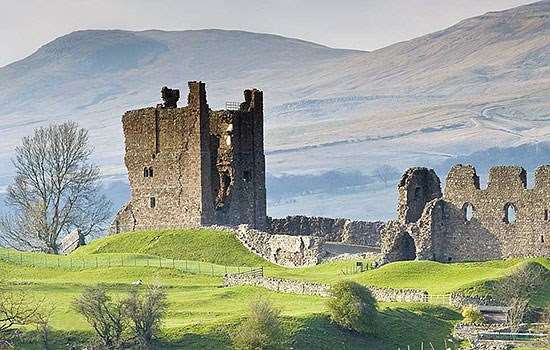History of Christchurch Castle and Norman House
Today, two parts of Christchurch Castle survive – a typical motte-and-bailey castle, and a chamber block now known as the Norman House. The area between them, now a bowling green, was once the defended courtyard or bailey of the castle, and would have been filled with buildings.
Begun in about 1100 under the de Redvers family, the castle passed to the Crown in 1293, and was attacked during the Civil War by Parliamentarian troops before being dismantled in 1651. The Norman House is one of the few surviving examples of Norman domestic architecture in England.

Origins of Christchurch and the Castle
Christchurch Castle lies on the site of the Saxon fortified settlement of Twynham, or ‘the place between rivers’. A monastery had been founded in the area by Edward the Confessor (reigned 1042–66) in 1043. The presence of the monastery led to the site being renamed Christchurch in 1177.
The first castle, probably built of earth and timber, is known to have existed by 1107. It may have been built by Richard de Redvers (or Revières), a follower of William the Conqueror’s youngest son, Henry. After Henry became king in 1100 he rewarded Richard with extensive estates, including the manor of Christchurch. The castle was home to the de Redvers family for the next 150 years.
Christchurch was temporarily forfeited in 1136 as Richard’s son, Baldwin, 1st Earl of Devon, supported the Empress Matilda in her unsuccessful claim to the throne against that of King Stephen (r.1135–54). It was restored to the de Redvers later that year.
The great chamber block, later known as the Norman House, was built in about 1160, providing luxury accommodation for the earl and his family. The castle’s keep or great tower was rebuilt in stone in the late 12th century.
The castle passed to the Crown in 1293. Thereafter it was granted to several noble families, and the Norman House continued in use as the residence of the constable responsible for the security the buildings.
The Castle during the Civil War
During the Civil War (1642–51), Parliamentarian troops attacked and took Christchurch, a Royalist town. In January 1645 a troop of 1,000 Royalists attacked Christchurch in return, forcing the Parliamentarians to seek refuge in the castle.
The castle proved too strong to capture and the Parliamentarians retained both the castle and town throughout the rest of the war. Its defences were dismantled by order of Parliament in 1651. Local people helped themselves to the building materials, and by the late 17th century the castle was a ruin.
Further Reading
Page, W (ed), Victoria History of Hampshire and the Isle of Wight, vol 5 (1912), 88–93
Wood, M, Christchurch Castle (HMSO guidebook, London, 1974)
Wood, M, The English Medieval House (Bracken Books, 1985)


